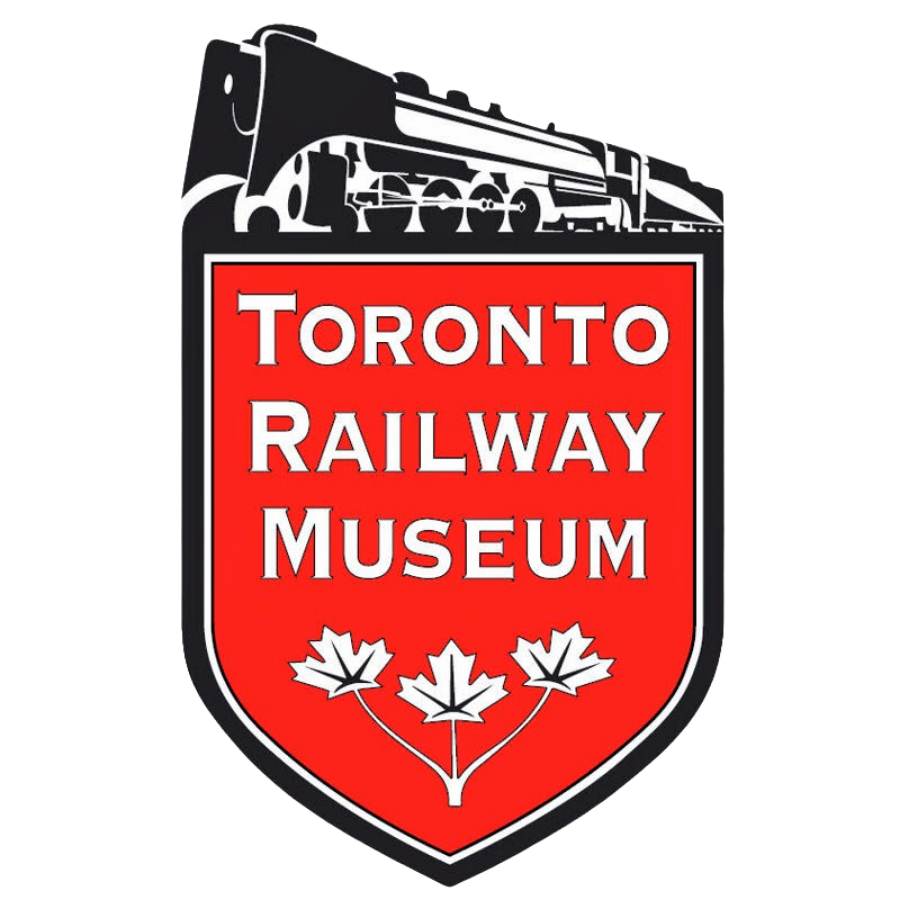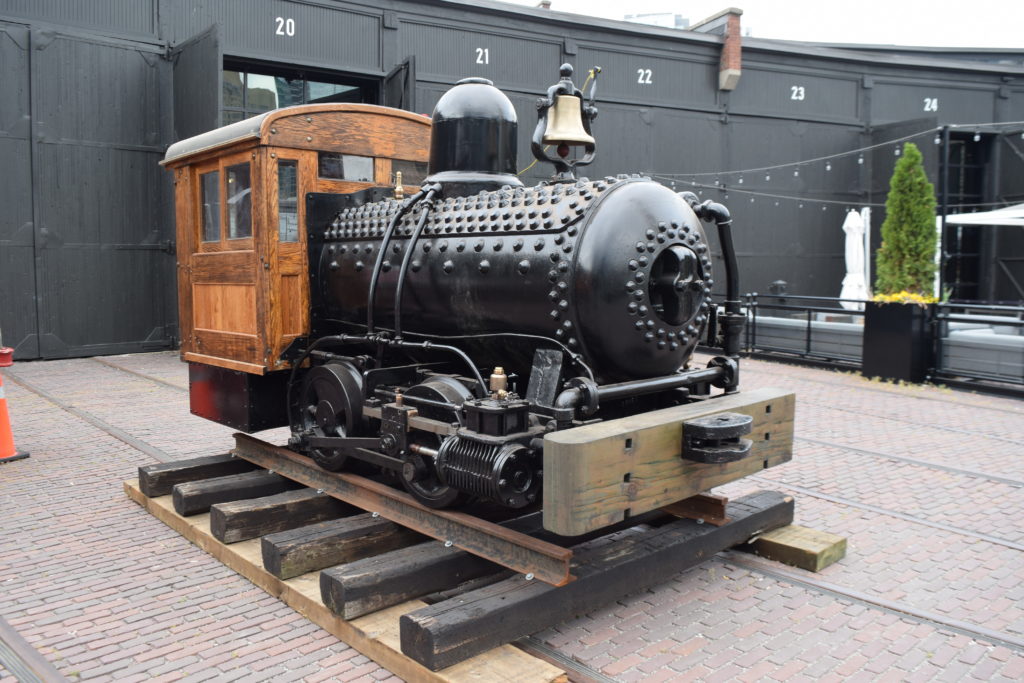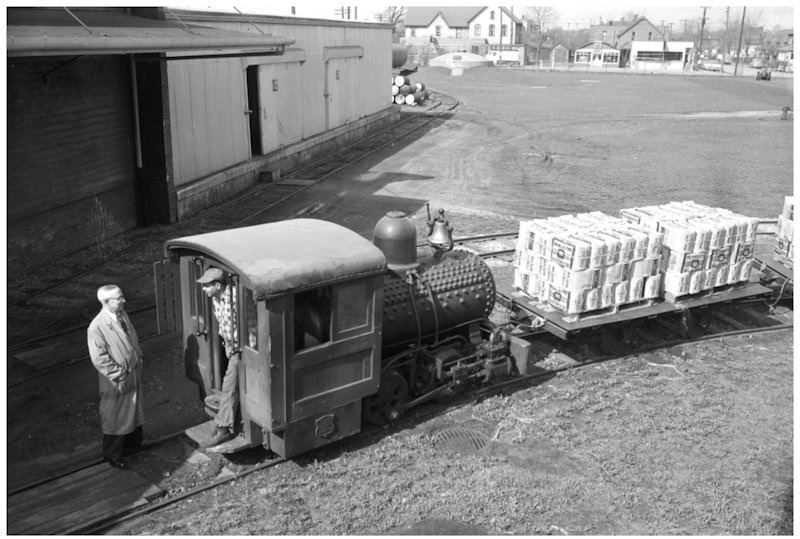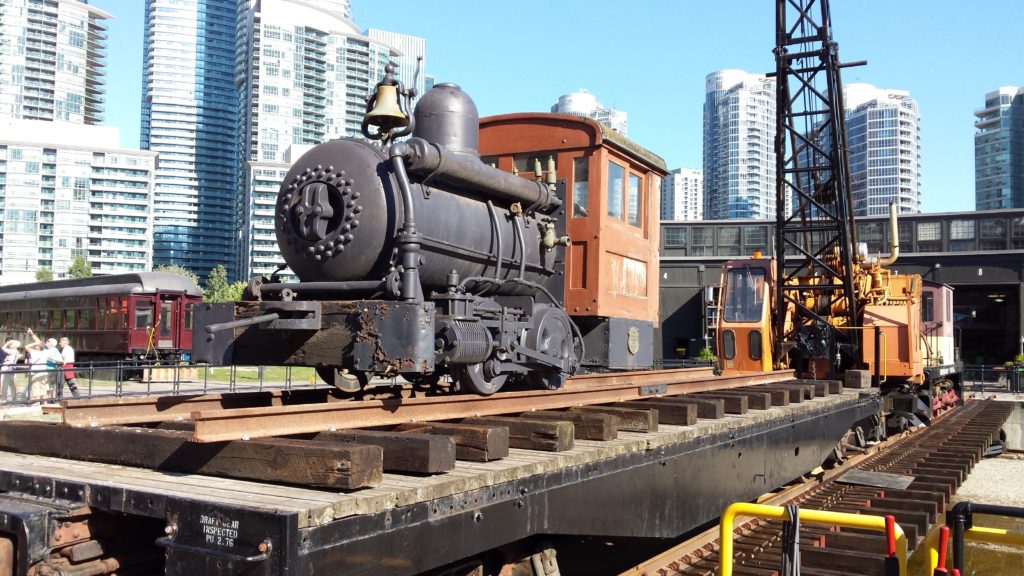Narrow gauge railways – which were any railways that used a narrower track gauge than the 4′ 8.5” standard in North America – saw a brief window of popularity in Canada during the late 1800’s. Their goal was to reduce construction costs but they were soon found to be impractical over long distances. The narrow gauge disappeared from virtually all railways in the Toronto area by the 1880’s, but it remained in use by industries for internal switching operations at large factories and occasionally in construction projects.
H. K. Porter Inc. was perhaps the biggest producer of light duty and narrow gauge engines in North America and built almost eight thousand of them. The six ton 40.5” gauge Porter fireless locomotive that we have restored was built in 1906. It operated at the Plymouth Cordage Company’s plant in Welland, Ontario. The materials in that plant were highly inflammable so the engine was designed to have its “boiler” filled with compressed air outside of the plant. It operated much like a steam locomotive except for the fact that it produced no steam. During the Porter’s working life, it was estimated that it travelled over 50,000 miles or twice the length of the equator on only 1,800 feet of track.
When Plymouth Cordage replaced the railway with fork lifts and tractors in 1956, the engine was purchased by well known railway equipment dealer and rail enthusiast Andrew Merrilees and transported to his plant on Old Weston Road in Toronto. For the next sixty years, the locomotive functioned as a corporate mascot or lawn ornament. Rather than being allowed to deteriorate like most outdoor display engines, ongoing maintenance and occasional restoration kept the Porter in good shape over the years. It was generously donated to the Toronto Railway Museum in 2019. Our restoration team cosmetically restored the locomotive and it is now on display at our museum entrance.






